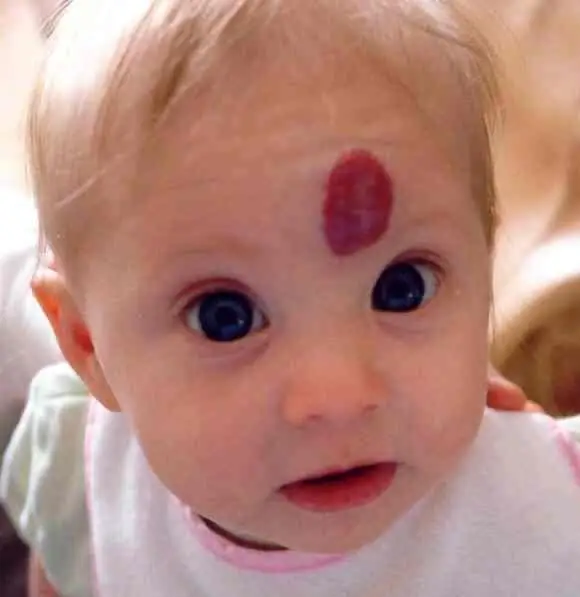- Author Horace Young [email protected].
- Public 2023-12-16 10:35.
- Last modified 2025-01-23 11:41.
Birthmarks have long attracted close attention. They were looking for hidden meaning, trying to "read" fate. They can be located anywhere, including on the back of the head.

A birthmark in the back of the head of a newborn cannot but catch the eyes of parents. If the father, mother, grandfather or other relative has the same “mark”, it is most likely a hereditary trait. But such spots are not always of genetic origin.
Delusions
A large mark on a baby's head often terrifies parents. There is no shortage of fantastic “explanations”: someone “jinxed” the mother during pregnancy, someone caused damage, etc.
There are other fears as well. The reason for the "mark" is seen in the mother's illnesses, suffered during pregnancy, in her unhealthy diet. A large spot on the head can be considered a sign of poor health of the baby and even a manifestation of an incipient oncological disease. Such fears are closer to reality than the notorious "damage and evil eye", but they have not much more reason.
In order not to succumb to false fears, one should be aware of the true nature of this phenomenon.
Infant hemangioma
In the first days or even weeks of life, a child may develop an infant hemangioma. Most often, it is already noticeable at birth. Outwardly, it resembles a birthmark, but in reality it is a benign tumor of the blood vessels.
In girls, hemangioma occurs seven times more often, but it also occurs in boys. Often it appears on the head.
From 1 to 8 months, the hemangioma grows, becomes bright red and uneven. When growth stops, regression begins, which can occur within one year or stretch for 9 years. Hair at the site of the hemangioma does not grow or there are few of them. The hemangioma will decrease in size and become gray. Ultimately, the skin in this place will acquire a normal color, and only an elongated fragment of it will remind of a hemangioma. This defect can be easily removed by surgery.
In the arsenal of modern medicine, there are various methods of removing hemangiomas: laser therapy, cryotherapy, sclerotherapy. However, such radical methods are resorted to only in those cases when hemangiomas appear on the mucous membrane of the mouth, eyelid, ear, near the nose and prevent the child from eating, seeing, hearing, breathing. This does not apply to a hemangioma that has arisen on the back of the head. The question of removing it can arise only in the case of intensive tumor growth. In other cases, the swelling goes away on its own.
The best thing that parents can do in case of a baby with a hemangioma on the back of the head is to consult a pediatrician and follow his instructions.






